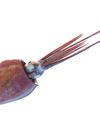
The accepted future of air travel today is firmly in the hands of planes, but at the end of the 19th century it was airships that held the keys to the sky. Floating leisurely above the clouds, the story of these craft has often been forgotten and sidelined in favour of fixed-wing aviation achievements, but remains a key part of humanity's history of flight.
BALLOONMANIA STRIKES EUROPE
1784
Jean Pierre Blanchard was a Frenchman who dreamed of flight. The owner of an inquisitive mind, he unsuccessfully attempted to develop manual-powered aeroplanes and helicopters before finding fame with another aviation idea: hot-air balloons. In March 1784, Blanchard first took to the skies in a homemade balloon, a year after the first successful balloon flight by the Montgolfier brothers. In 1785 he teamed up with an American physician, Dr John Jeffries, and lifting off from Dover Castle flew over the English Channel to France. The journey took a leisurely two-and-a-half hours and was a world first. Blanchard's flights triggered 'balloonmania' among the public, with all manner of balloon memorabilia being produced. However, Blanchard would suffer an unfortunate end when he had a heart attack mid-air in 1808. Plummeting 15 metres to the ground caused massive injury that he would never recover from, and he died the next year.
A CHANGE IN DIRECTION
1852
This story is from the Issue 176 edition of How It Works UK.
Start your 7-day Magzter GOLD free trial to access thousands of curated premium stories, and 9,000+ magazines and newspapers.
Already a subscriber ? Sign In
This story is from the Issue 176 edition of How It Works UK.
Start your 7-day Magzter GOLD free trial to access thousands of curated premium stories, and 9,000+ magazines and newspapers.
Already a subscriber? Sign In

INCREDIBLE SOLAR SYSTEM CRATERS
Why these spectacular craters carved out by past impact events are among the most widespread and distinctive geological features in the Solar System

HOW NORTH AMERICA'S GREAT LAKES FORMED
The world's largest freshwater system comprises five immense interconnected lakes, carved into Earth by glaciers

BUILDING THE WORLD'S DEEPEST CAR PARK
Australia's most famous landmark is often marvelled at from ground level, but its innovative spiral substructure is a hidden gem

FINDING THE COLOSSAL SQUID
This elusive creature spawned a legend of a deep-sea monster that endured for centuries

Octopuses burn more calories changing colour than you do on a 23 minute run
For octopuses, changing colour burns about as many calories as a human on a 23-minute run. Octopuses are masters of disguise, changing colour at the drop of a hat to startle predators and hide from prey.
The world's first silicon-anode battery could revolutionise electronic vehicles
A ceramic battery manufacturer has unveiled a solid-state battery concept that can be charged from 5 to 60 per cent capacity in just five minutes, giving future electric vehicles (EVS) a 186-mile range in the time it takes to order a coffee.

New technology gives AI the power to feel surfaces
Scientists have given artificial intelligence (AI) the capacity to 'feel' surfaces for the first time, opening up a new dimension for deploying the technology in the real world.

Visit Plane Earth 2125
How might our world have transformed under the strain of climate change 100 years from now?

The world's largest organism may have been growing for 80,000 years
Pando, an enormous quaking aspen that spans more than 40 hectares in Utah, is not only one of the largest known organisms on Earth, it's also one of the oldest.

Scientists detect the most powerful cosmic rays ever
Scientists have detected the most energetic cosmic rays ever discovered, and they're being produced by mysterious sources relatively close to Earth.
